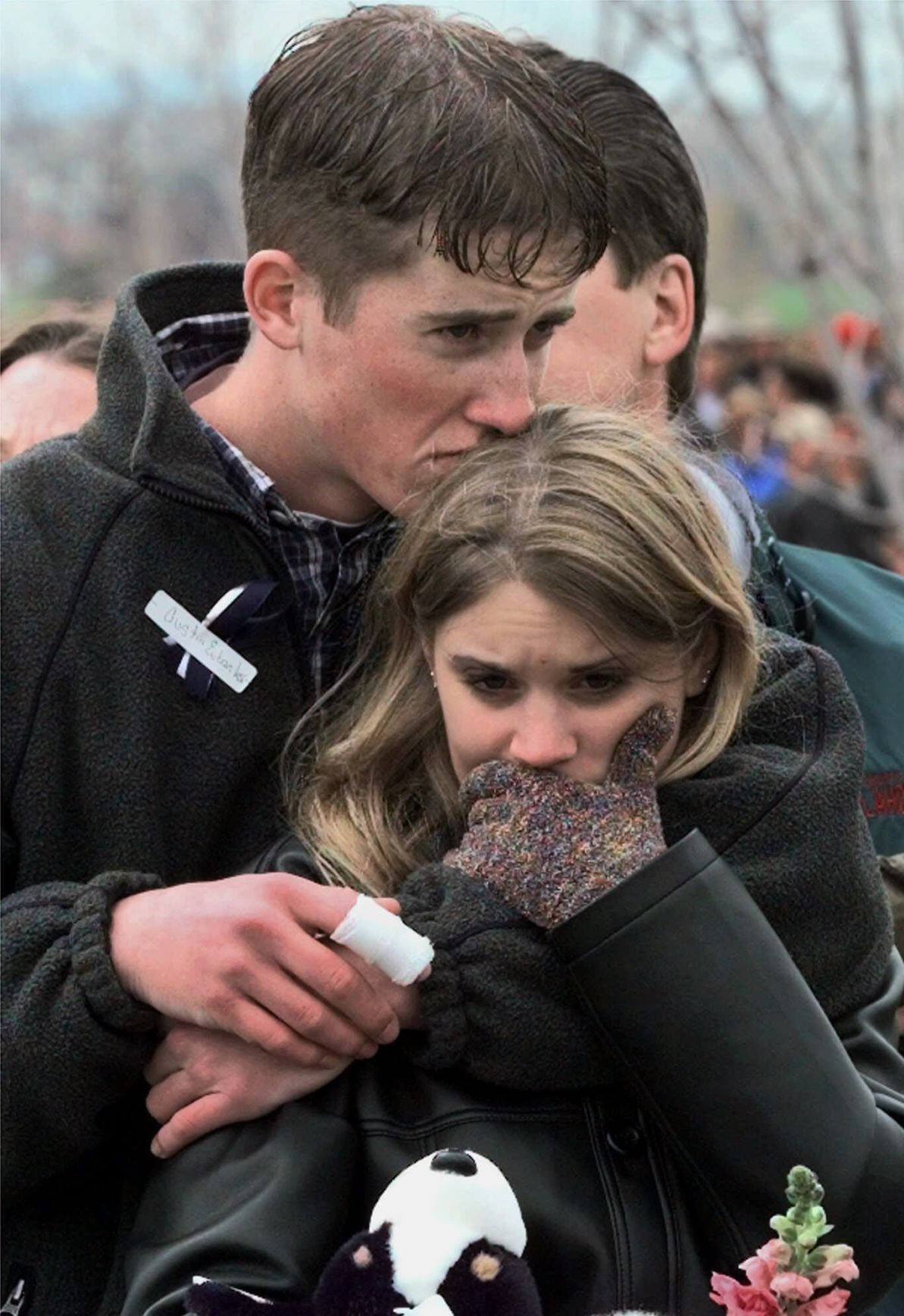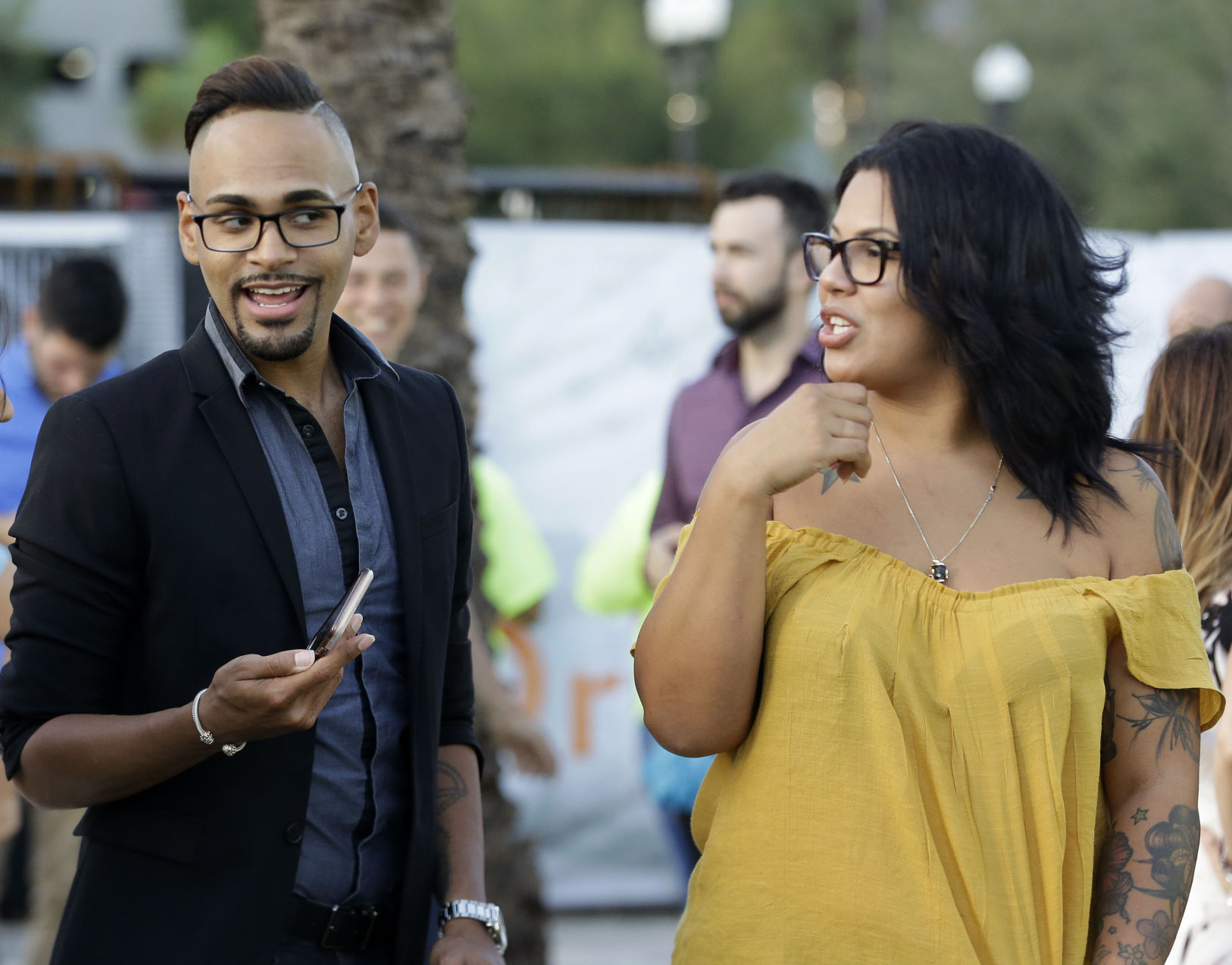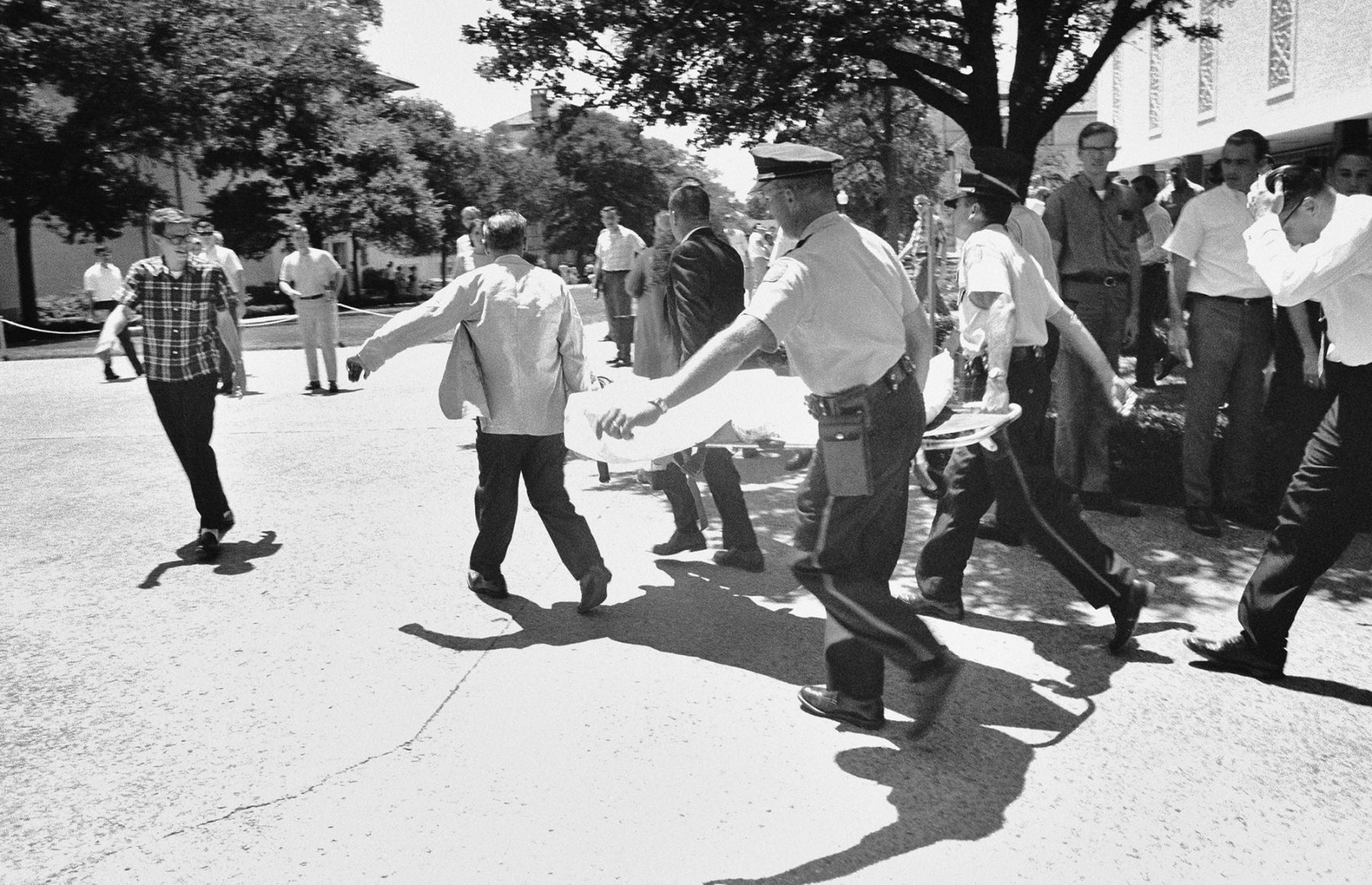CHICAGO (AP) — Every time there’s a mass shooting, Adrian Littlefield relives the one that nearly killed him half a century ago when a sniper perched high in a tower fired down on a Texas college campus. There have been
CHICAGO (AP) — Every time there’s a mass shooting, Adrian Littlefield relives the one that nearly killed him half a century ago when a sniper perched high in a tower fired down on a Texas college campus. There have been dozens of rampages since then, each one a reminder of how his life was forever changed by a stranger hell-bent on mayhem.
“I still get frightened when those things happen,” said Littlefield, now a 70-year-old preacher living in East Texas. “It stirs something inside me, a hurt that just never goes away.”
Survivors of mass shootings like the one in Las Vegas say what got them through was leaning on family, friends and counselors.
For Angel Colon, the pain is fresh. He was shot six times last year during the Pulse nightclub massacre in Orlando, Florida, and says he is grappling with post-traumatic stress.
“Ambulances, police, even glass, as well, is a trigger. Little specific things, sometimes you forget about, and when you see it, you remember,” Colon said. That shooting killed 49 people and injured dozens of others.
Recovery took a long dark turn for Austin Eubanks, just 17 when two classmates went on a rampage at Columbine High School. Eubanks was shot in his hand and knee and watched his best friend die, one of 13 killed in the 1999 attack in Colorado. His physical injuries healed quickly, but Eubanks turned to opioid painkillers to dull the psychological pain and spent 11 years fighting addiction.
Ultimately, Eubanks said he learned that “you have to find the courage to lean into the pain. In order to heal it you have to feel it. You have to know you will come out the other side.”
Littlefield and his then wife were among 30 people injured in the 1966 clock tower shooting at the University of Texas; 17 people died. Littlefield was shot in the back while trying to protect his wife, who worked on the campus. The bullet just missed his spine but tore through his colon and damaged a major nerve, leaving his left leg partly paralyzed.
Back then, he says, “there was no such thing as counseling for post-traumatic stress. You went on with your life, picked up the pieces, put it back together and made the best of it.”
Littlefield turned to his faith and family for solace, especially his father, who helped rescue him. Though he was told he’d never father children, he has two sons, a second wife he cherishes and a calling that teaches compassion, not bitterness. He still feels pain, in his back and hip, and walks with a limp, but says, “I’ve had a wonderful life.”
Still, he said the Las Vegas shooting brought that lurking fear back.
“The sounds of gunfire and arriving first responders all remind me of the helplessness that surrounds you at that moment,” he wrote Thursday on his Facebook page. To the survivors and grieving loved ones, he added, “I surely feel your pain.”
At an Orlando vigil for the Las Vegas victims on Tuesday, Colon said his first thought was “How can we help these families. Because we know what it feels like.”
Before the shooting, Colon was a dance exercise instructor, now he walks with a cane. He said keeping close to family and friends is helping him heal. So does “staying positive and trying to help out as much as I can and spread all the love that I can.”
Norman Casiano, another 27-year-old Pulse survivor, was hiding in a bathroom stall when the Orlando gunman shot him twice through the door. He’s on disability and says he still has anxiety. He came to the vigil “to show the support we were shown last year.”
To Las Vegas survivors: “It seems really hard and it seems like there’s no light at the end of this crazy, crazy tunnel that you’re going through right now, but there is,” he said.
Eubanks emphasized that the emotional fallout spreads far beyond the victims to families, the rescuers and the medical professionals.
“The ripple effects of these are tremendous,” he said.
Now 35, he runs a substance abuse treatment center in Steamboat Springs, Colorado, where fly-fishing and other “healthy pursuits” help him feel whole.
“The most important piece is human connection,” he added. “I’m surrounded by people who know everything about me. I have no problem calling any of them to say, ‘I’m really struggling today.'”
That ripple effect hit Ashley Cech hard. She was a 20-year-old college student taking a final exam on Dec. 14, 2012 when she heard about gunfire at Sandy Hook Elementary School in Newtown, Connecticut, where her mother was a librarian, in the town where she grew up.
Yvonne Cech had herded a group of fourth graders into a closet to hide from the shooter, a former student who killed 20 first-graders and six educators before taking his own life. She was not physically hurt but her daughter says the whole family’s life changed that day.
Ashley Cech knew many of those killed, and attended 13 funerals with her mother, who now works at a library in a nearby town. Counseling from a trauma specialist who came to Newtown helped her understand her own grief, Cech says.
Five years later, she said she’s still “hyper-aware” in crowds, always looking for an escape route.
The school shooting prompted her to switch career goals from teaching to advocacy. She now works with violence survivors at a group that promotes gun safety.
“The part that is so heartbreaking … those people are now going to be going through exactly what our community in Newtown went through,” she said.
———
AP reporter Tamara Lush contributed to this report from Orlando, Florida.
———
Follow AP Medical Writer on Twitter at @Lindsey Tanner . Her work can be found here .




